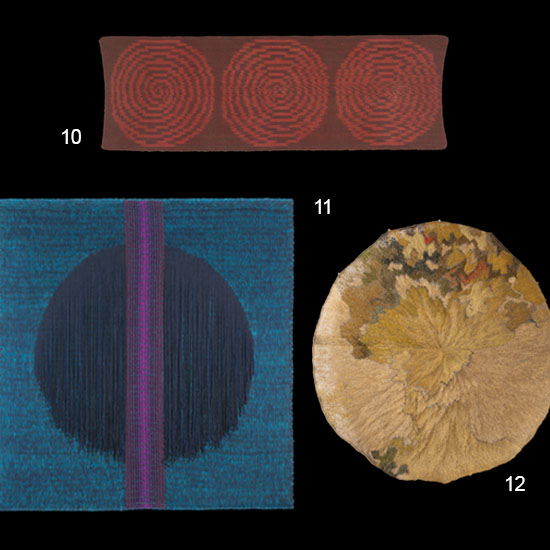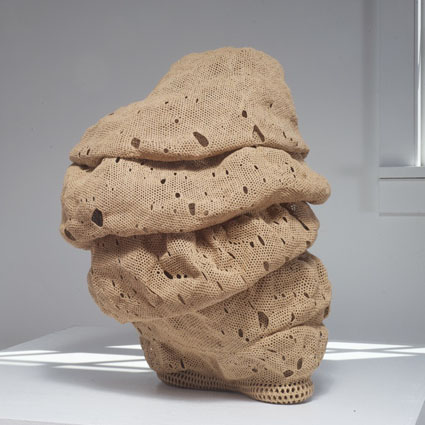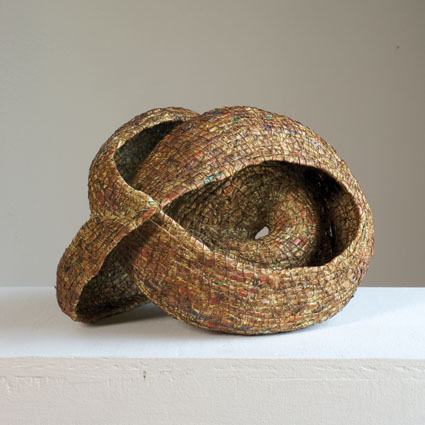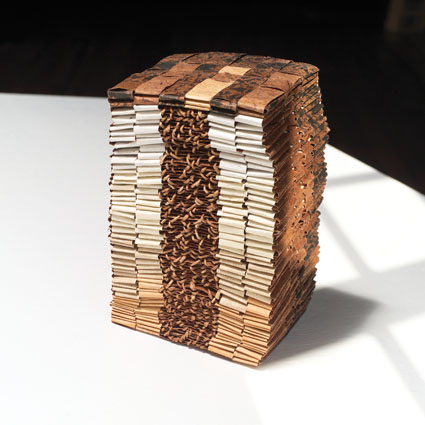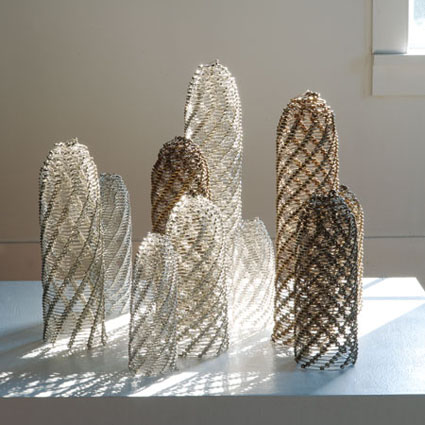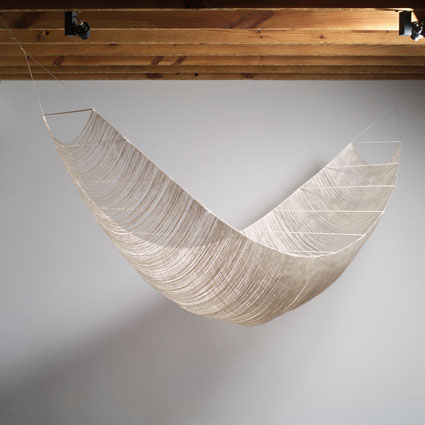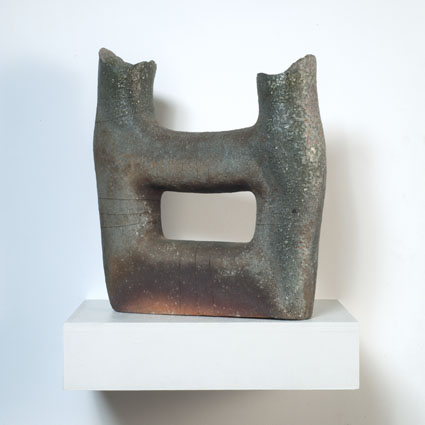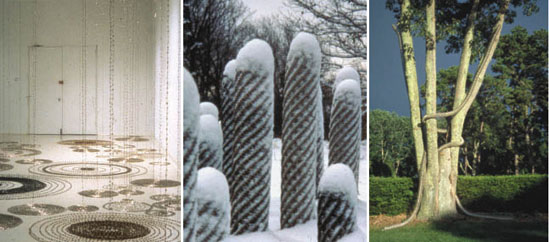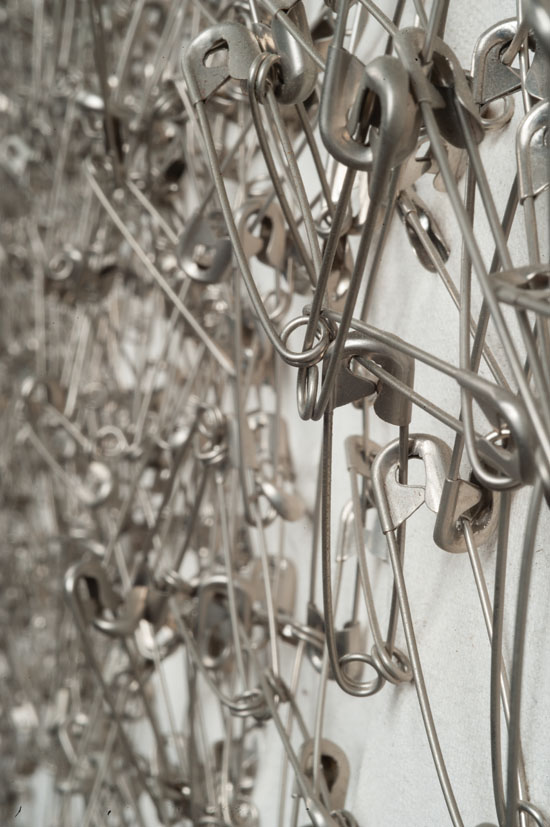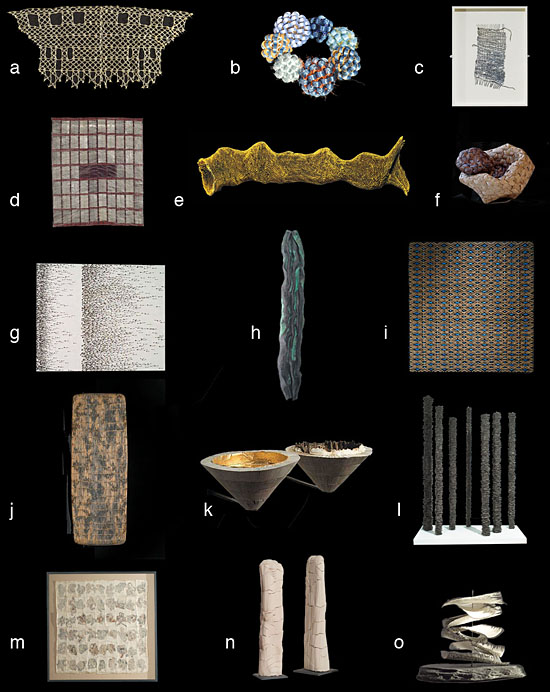A selection of rounds, orbs, spheres and circles in different sizes made from a myriad of materials, including paper, safety pins and silk.
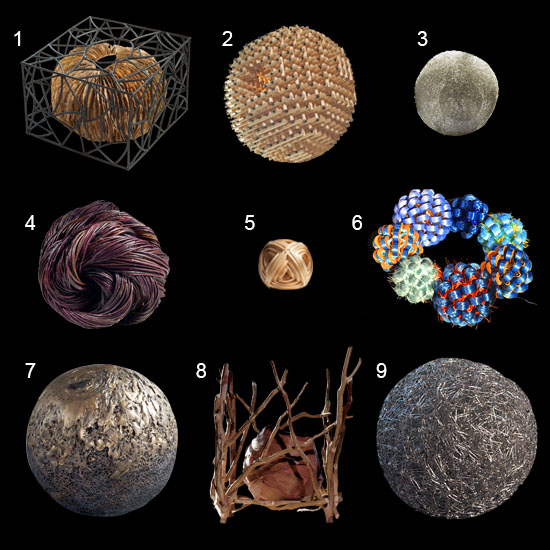
1) OVER EASY, Dona Anderson
paper armature covered with pattern paper as surface design. Frame (cover) is rounds reeds strengthened with pattern paper, polymer and black paint, 10″ x 14″ x 14″ , 2011
2) SMALL WILLOW BOWL, Dail Behennah
white willow, silver-plated pins, 9″ x 9″ x 9″, 2007
3) A BEGINNING, Kyoko Kumai
stainless steel filaments, 7” x 7” x 7”, 2007
4) AIR, Christine Joy
Rocky Mountain Maple with encaustic finish, 9.84″ x 9.84″ x 9.84″, 2012
5) REVOLVING SIX ELEMENTS KYOUGI, Noriko Takamiya,
hinoki inner thin splint, 6″ x 6.75″ x 6″, 2012
6) BLUE SPOOLS SCULPTURE, Axel Russmeyer
bobbins, wood, copper wire,, 4″ x 10″ x 10″, 2008
7) GOLDEN CRATER, Norma Minkowitz
mixed media, 18″ x 18″ x 18″, 2009
8) EUCALYPTUS BARK POD IN WOOD FRAME I Valerie Pragnell,
eucalyptus bark, clay and bees wax in wood frame, 19″ x 15.5″ x 16″, 2001
9) SILVER SPHERE,Tamiko Kawata
saftey pins,14″ x 14″ x 14″, 2004
10) WARP IKAT SPIRAL, Ed Rossbach
3’ X 9’, 1962
11) HOMMAGE Á ROTHKO, Mariette Rousseau-Vermette
wool, 87″ x 84.5″, 1979
12) PODROZ (Journey) from the Kolodia series, Agnieszka Ruszczynska-Szafranska
linen, sisal, wool, 60″ x 56″, 1986

